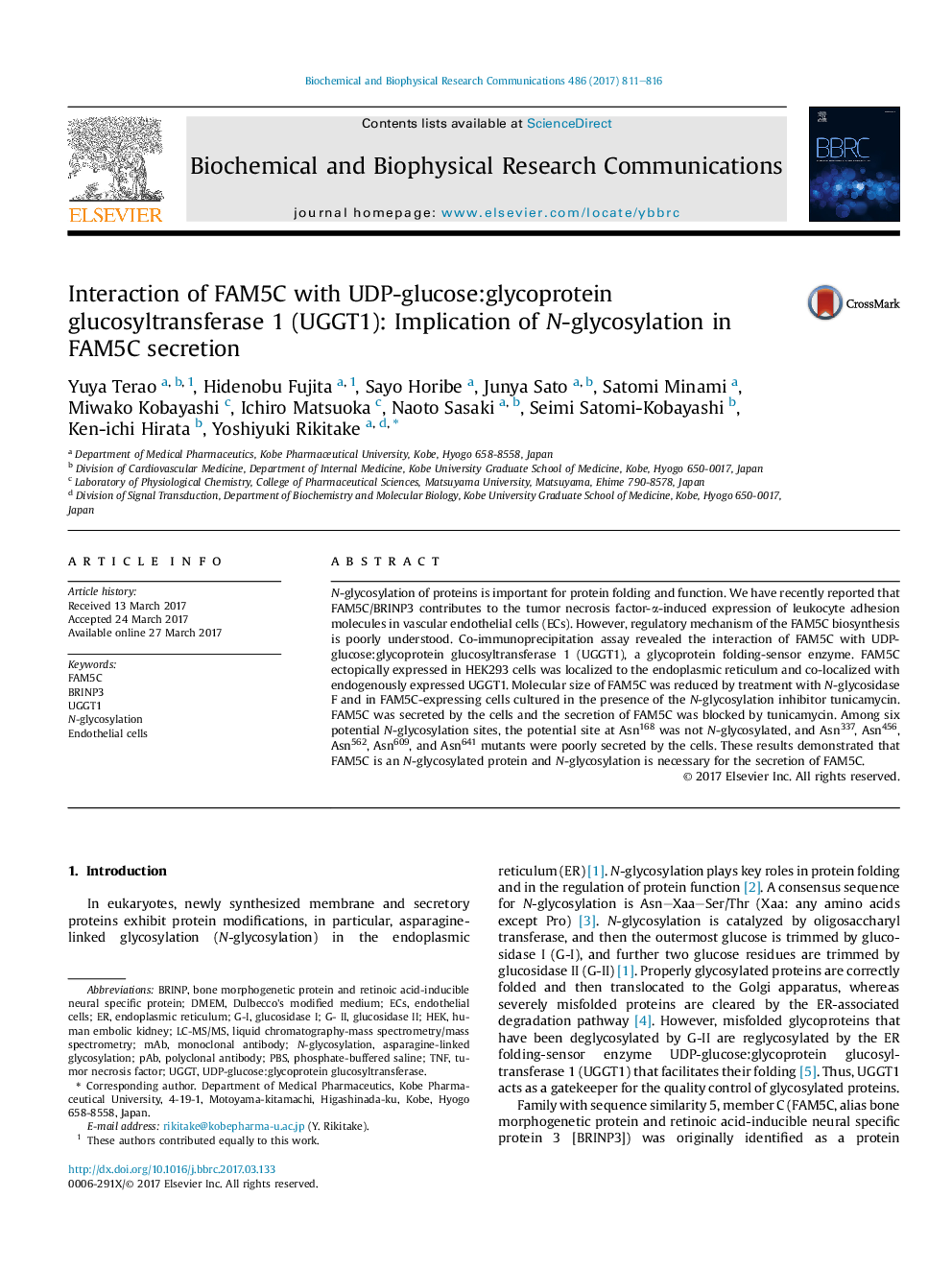| Article ID | Journal | Published Year | Pages | File Type |
|---|---|---|---|---|
| 5505049 | Biochemical and Biophysical Research Communications | 2017 | 6 Pages |
Abstract
N-glycosylation of proteins is important for protein folding and function. We have recently reported that FAM5C/BRINP3 contributes to the tumor necrosis factor-α-induced expression of leukocyte adhesion molecules in vascular endothelial cells (ECs). However, regulatory mechanism of the FAM5C biosynthesis is poorly understood. Co-immunoprecipitation assay revealed the interaction of FAM5C with UDP-glucose:glycoprotein glucosyltransferase 1 (UGGT1), a glycoprotein folding-sensor enzyme. FAM5C ectopically expressed in HEK293 cells was localized to the endoplasmic reticulum and co-localized with endogenously expressed UGGT1. Molecular size of FAM5C was reduced by treatment with N-glycosidase F and in FAM5C-expressing cells cultured in the presence of the N-glycosylation inhibitor tunicamycin. FAM5C was secreted by the cells and the secretion of FAM5C was blocked by tunicamycin. Among six potential N-glycosylation sites, the potential site at Asn168 was not N-glycosylated, and Asn337, Asn456, Asn562, Asn609, and Asn641 mutants were poorly secreted by the cells. These results demonstrated that FAM5C is an N-glycosylated protein and N-glycosylation is necessary for the secretion of FAM5C.
Keywords
PBSUDP-glucose:glycoprotein glucosyltransferaseTNFBRINPGlucosidase IIUGGTPABHEKmAbDMEMECsLC-MS/MSN-glycosylationMonoclonal antibodyPolyclonal antibodyEndothelial cellsendoplasmic reticulumliquid chromatography-mass spectrometry/mass spectrometrytumor necrosis factorPhosphate-buffered salineAsparagine-linked glycosylation
Related Topics
Life Sciences
Biochemistry, Genetics and Molecular Biology
Biochemistry
Authors
Yuya Terao, Hidenobu Fujita, Sayo Horibe, Junya Sato, Satomi Minami, Miwako Kobayashi, Ichiro Matsuoka, Naoto Sasaki, Seimi Satomi-Kobayashi, Ken-ichi Hirata, Yoshiyuki Rikitake,
